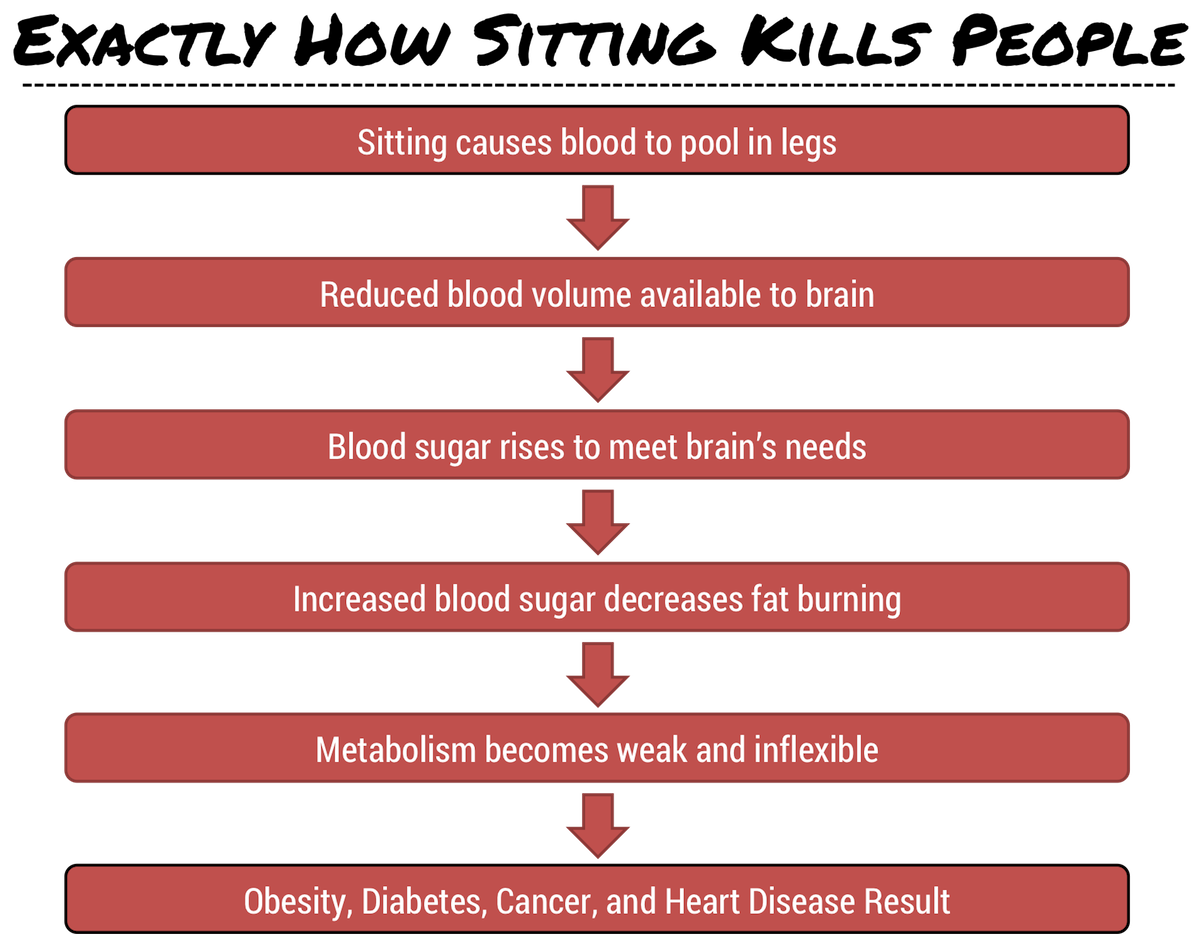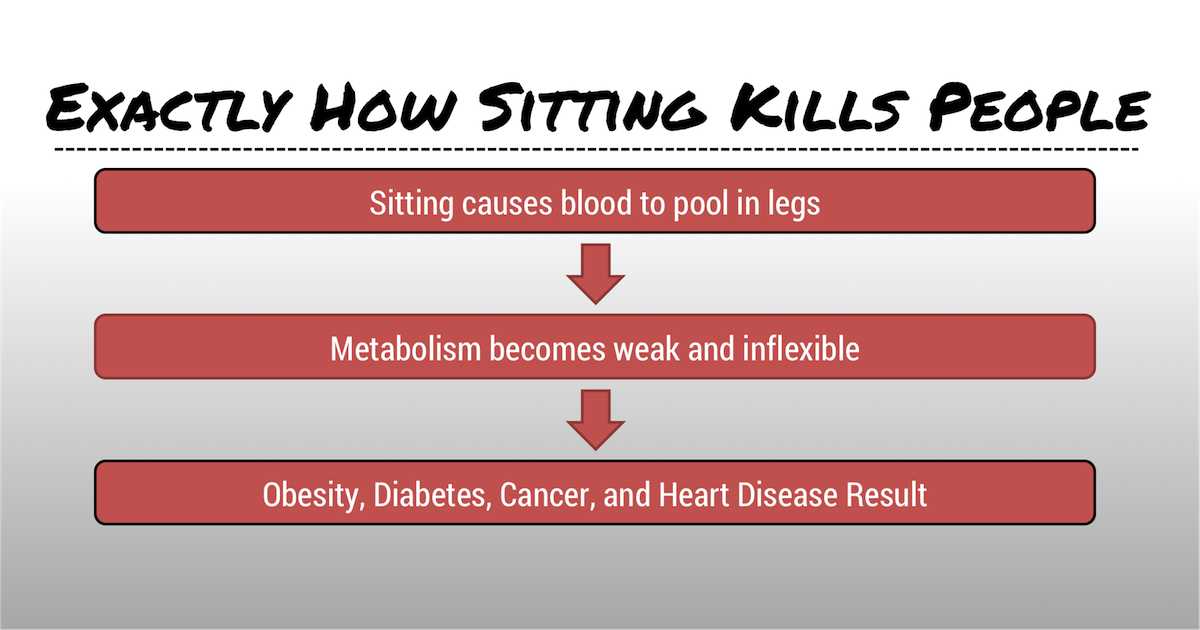 Grim statistics detailing the dangers of sitting abound. We’ve covered the facts before. So we know THAT sitting is bad for us, but exactly HOW is sitting unhealthy?
Grim statistics detailing the dangers of sitting abound. We’ve covered the facts before. So we know THAT sitting is bad for us, but exactly HOW is sitting unhealthy?
Some of those facts speak to the how of the matter – stuff like circulation, heart rate, and metabolic effects. But we need a deeper understanding to truly become independent assessors of our own ergonomics. And I know that what everyone really wants, deep down, is to be an independent assessor of their own ergonomics (wooooo!).
All jokes aside, it’s important that we all be able to decide in real life whether we’re doing healthy things. So let’s go!
Sitting is Bad Because it isn’t Walking
We spoke to this in depth in Vascular Hemodynamics for Dummies, so here’s a brief summary. You know that your heart pumps blood around your body. When you aren’t laying down, gravity helps your heart by pushing blood down to your feet. When you walk, calf contractions on each step force blood back up to your heart.
The problem with sitting (and standing still) is that your calves hardly ever contract, so you end up with blood pooling in your lower legs and feet. This means your heart is now working with less blood, which leads to other problems…
Less Blood Pumping Means Weak Metabolism
Scientific research has shown that long periods of sitting slows your metabolism, by decreasing the amount of circulating lipoprotein lipase, a fat-burning enzyme. Though this has been proven, the mechanism hasn’t (yet).
We think that it makes perfect sense. Your body’s cells, especially those in your brain, have a preference for glucose. If you’re sitting, your blood pools in your legs, meaning your heart and brain get a lower volume of blood. Although the blood volume available to your brain decreases, your brain’s demand for glucose does not. So your blood sugar rises (again, found in the research), leaving less room for free fatty acids in your blood, so fat burning gets down-regulated.
Weak Metabolism Means All Sorts of Health Issues
Health and obesity researchers have increasingly discovered that the collection of modern western diseases (Diabetes, Cancer, Heart Disease) stem from “Metabolic Syndrome”. In other words, the stuff that causes these illnesses is the same stuff that causes obesity. And it is very likely that sitting increases risk of death, principally, by causing metabolic syndrome.
This flowchart sums it up nicely:
If you prefer the condensed version:
So That’s It? Sitting is bad because…blood?!
We think that’s the main contributor, yes. Certainly, there are non-blood aspects of sitting that are detrimental. Studies show that more time sitting at work is correlated with less time being active at home. Mobility professionals like Kelly Starrett are quick to point out that your backside is simply not made for sitting on – and that doing so results in myofascial adhesion, tissue shortening, and muscle damage.
Sitting is also such a passive position that the lymphatic system, which relies on muscle contractions to transport large molecules, is also underutilized. If you dig this stuff, stay tuned, as we’ll cover the subject in depth in future posts.
And a standing desk at work will certainly help address those myofascial issues (especially if your desk is configured correctly). But it’s important to stand right, because when it comes to blood flow, impaired metabolism, and disease – standing still is just as bad as sitting. That’s why we keep hammering on improving your movement at your standing desk, and why movement is a massive component of our transition plan.
The post But HOW is Sitting Bad For You? appeared first on Quitting Sitting.






















